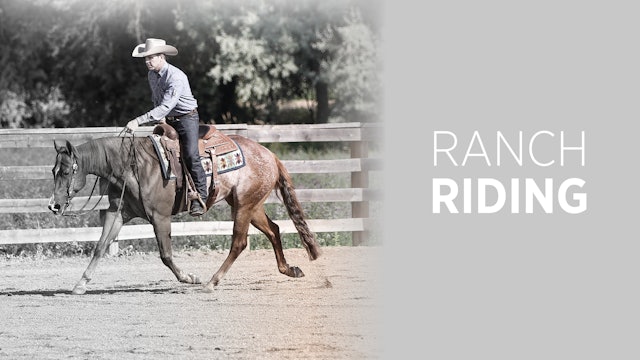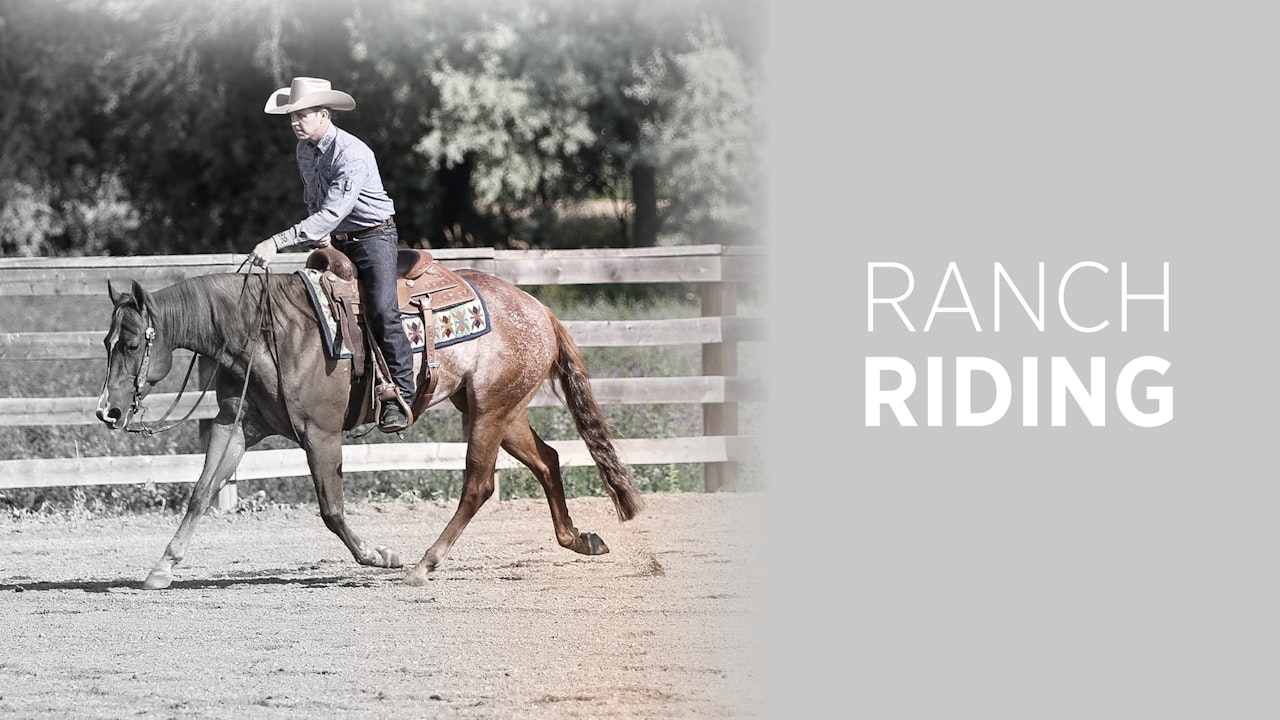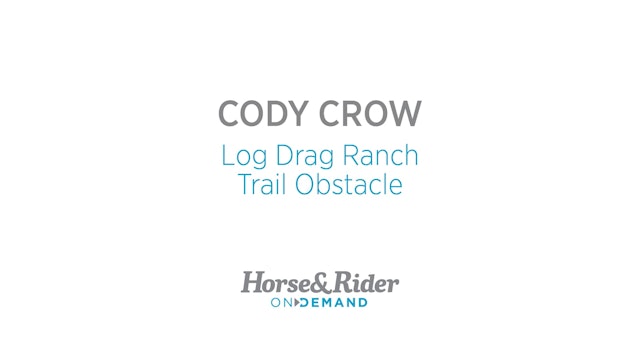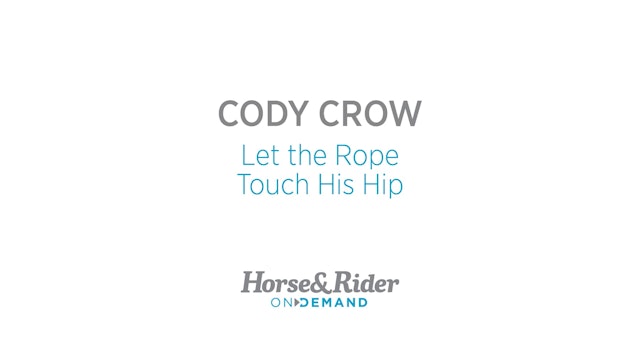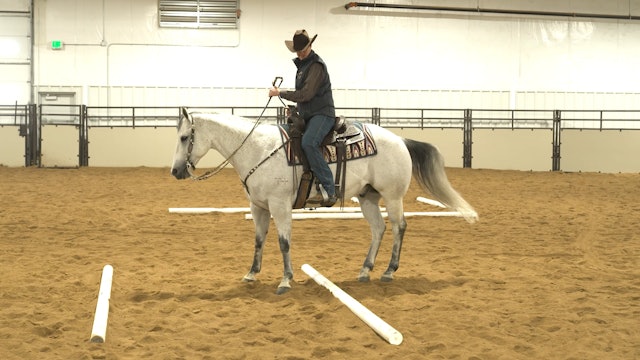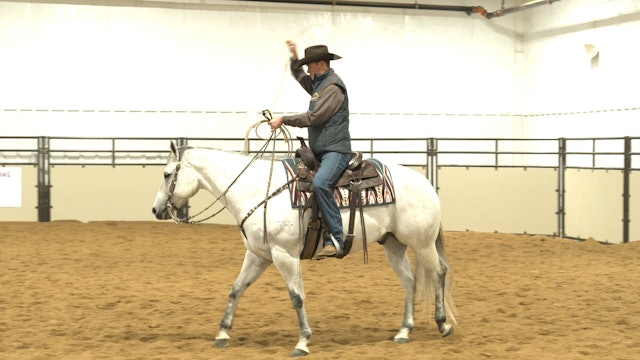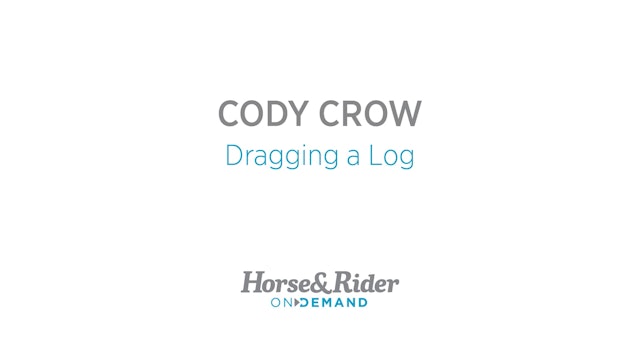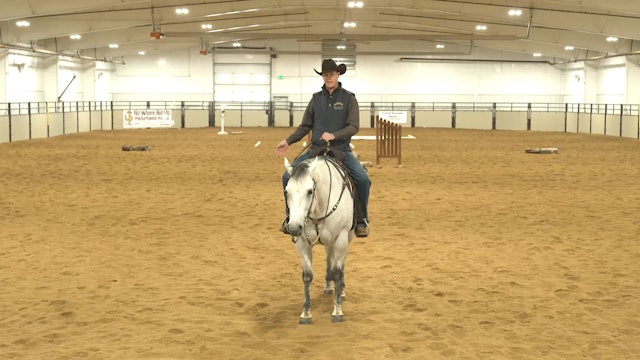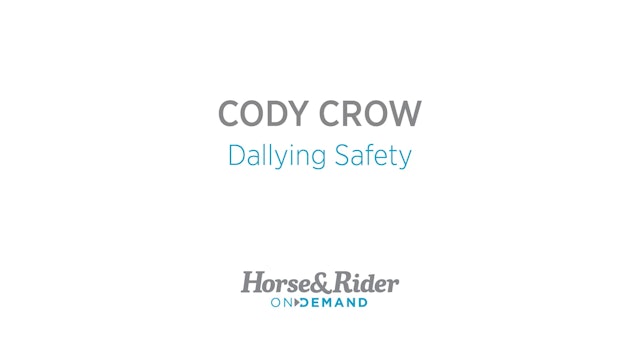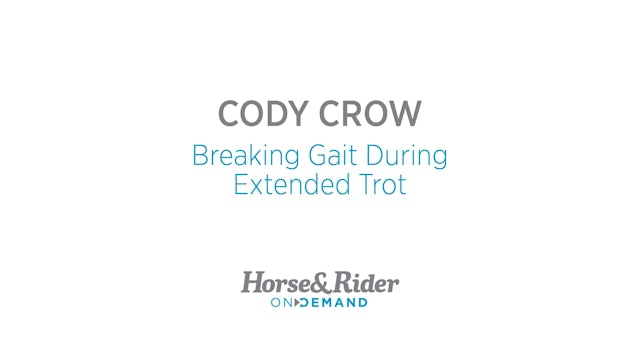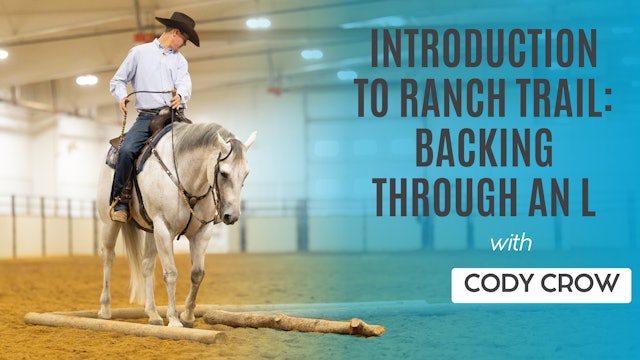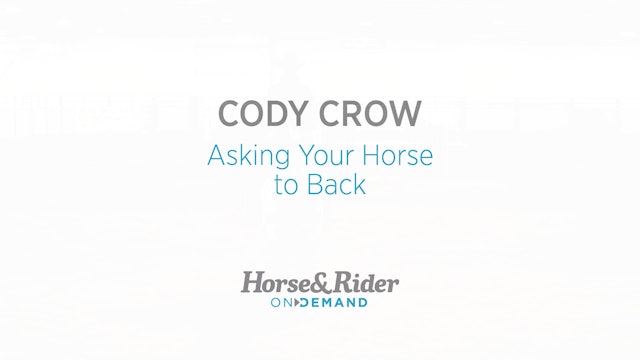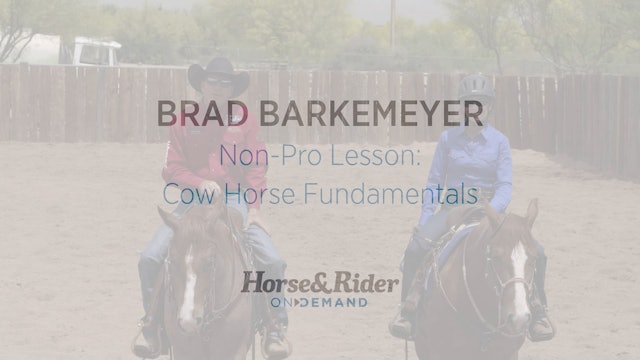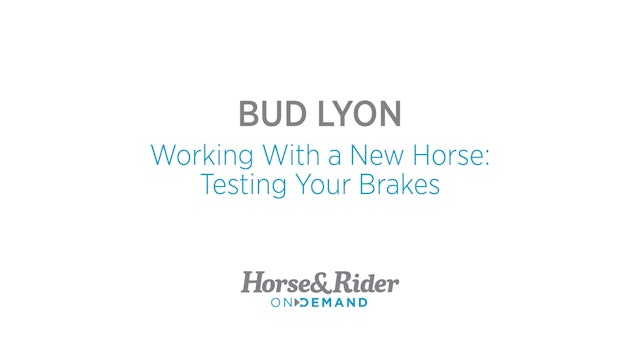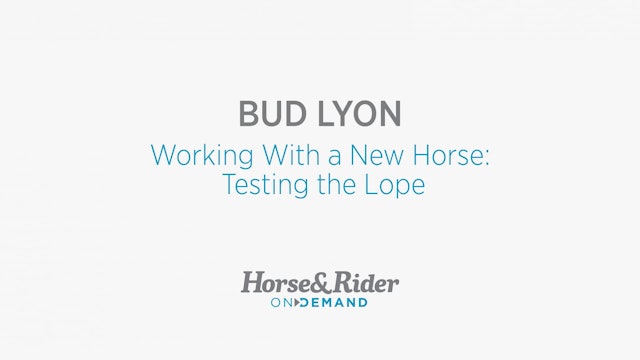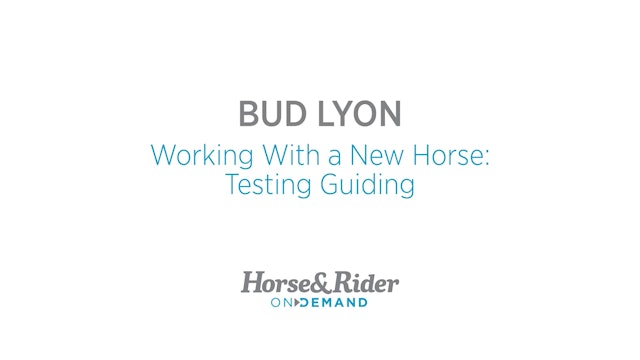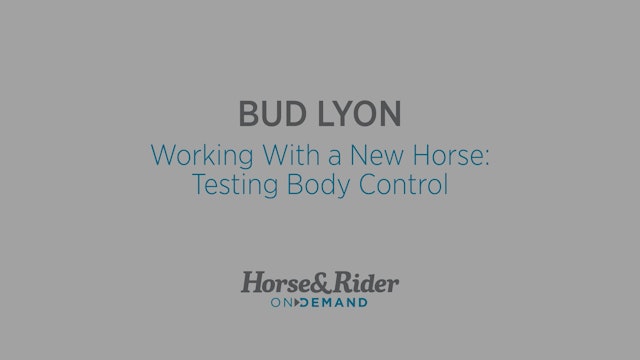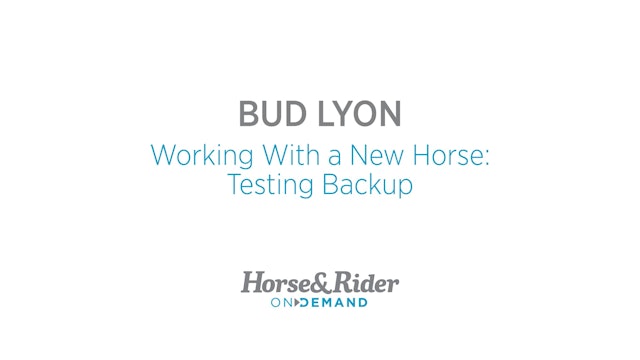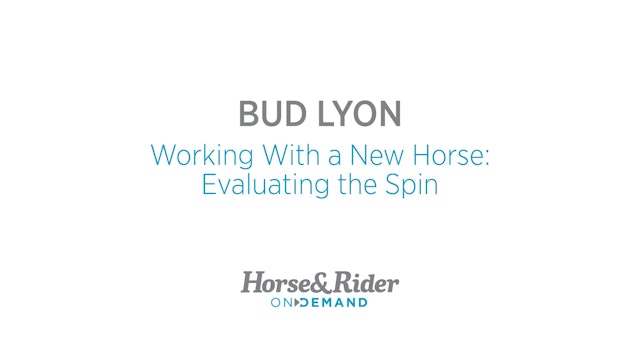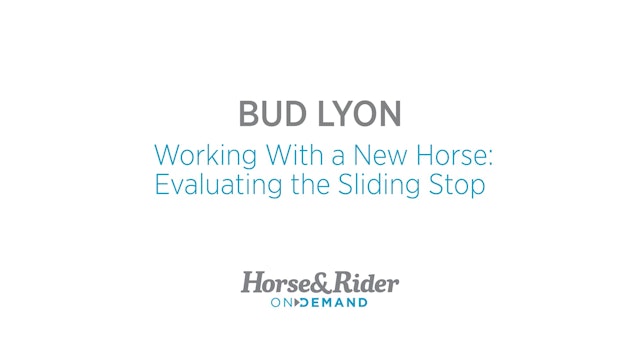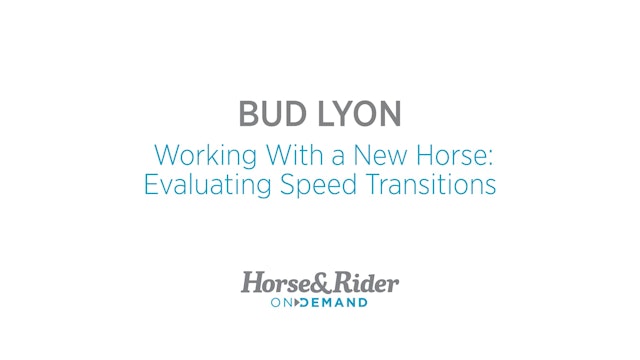-
Introduction to Ranch Trail:Dragging a Log
Cody Crow shows you the different ways you might drag a log when you're competing in the ranch trail.
-
Handling a Rope: Let it Touch Your Horse's Hip
The next step in desensitizing your horse to a rope and dragging a log is by letting the rope touch your horse's hip so he can get use to the feel of a rope pulling something.
-
Introduction to Ranch Trail: Teaching the Sidepass
A sidepass is a common obstacle you're required to perform in a ranch trail class. Ranch versatility expert Cody Crow shows you how he likes to teach his horse how to sidepass over a log.
-
Handling a Rope
Do you know how to safely handle a rope when you're on a horse? Cody Crow shows you how to safely and properly handle a rope for ranch versatility events.
-
Introduction to Ranch Trail:Dragging a Log
Cody Crow shows you the different ways you might drag a log when you're competing in the ranch trail.
-
The Difference Between a Forehand Turn and Spin
Forehand turns and spins are used for difference reasons and require your horse to move different body parts. Cody Crow breaks down the differences between to two maneuvers and how to cue your horse to do each turn.
-
Desensitizing Your Horse to a Rope on the Ground
If you want to compete in ranch versatility, your horse needs to be comfortable with you swinging a rope off his back. But before you can start doing rope work on your horse's back, start by desensitizing him to it on the ground. Cody Crow demonstrates how he introduces a rope to a green horse.
-
Introduction to Ranch Trail: Dallying Safety
In the ranch trail you might be asked to drag a log while you're on your horse. Ranch versatility expert Cody Crow explains the importance of dallying safety so you don't severely injure yourself while practicing this maneuver.
-
Breaking Gait During an Extended Trot
During the ranch rail portion of a ranch versatility event, you'll be asked to do gait transitions and extended gaits. Cody Crow shows you what to do at home if your horse likes to break into a lope when asking him to extend trot.
-
Introduction to Ranch Trail: Backing Through an L
Being able to guide your horse around obstacles while backing is a major part of a ranch trail class. Cody Crow discusses the basics of backing your horse through an L.
-
Introduction to Ranch Trail:BackThrough Gate
There are several different ways you can approach a gate in ranch trail. Cody Crow demonstrates how to back your horse through a gate when you're showing.
-
The Basics of Backing
Before you start teaching your horse ranch versatility events, you need to make sure your horse understands the basic fundamentals of riding. Cody Crow shows you how he first teaches his horses how to back up.
-
Introduction to Ranch Trail: Adding Lopeover Logs
As your horse gets comfortable going over ranch trail lopeover logs, you can gradually add more logs and teach him how rate over the logs and go over lopeover obstacles.
-
NonPro Lesson:Cow Horse Fundamentals
Brad Barkemeyer works with one of his nonpro riders and goes over the fundamentals of working a cow.
-
Working With a New Horse:Testing Your Brakes
What happens when you’re riding a new horse and you ask for the stop? Does he stop automatically? Does he slowly trickle down to a stop? Or does he prefer to stop on his front end instead of his hind? In the third video in this 12-par series, Bud Lyon explains the importance of testing your stop ...
-
Working With a New Horse:Testing the Lope
Taking the time to test your horse’s lope will give you an idea as to how well he knows his leads and how well he moves laterally. This week Bud Lyon shows you how he likes to test a new horse’s lope as a continuation of his 12-part series.
-
Working With a New Horse:Guiding
When working with a new horse, it's important to test out all of his buttons and see where his skill level is at. Bud Lyon breaks down how he likes to test a horse's guiding ability when he gets on him for the first time.
-
Working With a New Horse:Testing Collection
Not sure if your new horse likes to stay collected during different maneuvers? Before you can do anything else with your horse, it’s important that he wants to stay collected during different maneuvers. Bud Lyon shows you how he likes to test collection a new horse in the second video of the 12-p...
-
Working With a New Horse:Testing Body Control
When working with a new horse, it's important to evaluate how well your horse can move his body to better understand what his strengths and weaknesses are. Bud Lyon shows you how he likes to evaluate a horse's ability to move off his leg.
-
Working With a New Horse:Testing Back Up
When you get on a horse for the first time it's important to see how he reacts when you ask him to back. Does he stay collected as you ask for the back or does he stick his head in the air and move in either direction? Bud Lyon shows you the tests he puts a horse through to make sure the horse ha...
-
Working With a New Horse:Overall Evaluation
Learn what you need to assess in order to give your new horse an overall evaluation of his potential. Bud offers insight on how he evaluated his new horse and offers advice on how to move forward with your horse.
-
Working With a New Horse:Evaluating the Spin
In this part of this working with a new horse series, Bud Lyon explains how to test your new horse’s reining spin. Testing your horse’s spin not only will tell you whether or not he is a good candidate for the event, but will tell you what his style is, comfort level is, and how it matches up wit...
-
Working With a New Horse:Evaluating the Sliding Stop
You’ve learned how to evaluate your horse’s spins, lead changes, circles, and speed transitions, so now it’s time to evaluate the sliding stop. After evaluating the sliding stop, you can make a final evaluation of what you need to work on with your horse. It’s important to be able to work your ho...
-
Working With a New Horse:Evaluating Speed Transitions
In this video Bud goes back to evaluating a new horse for reining and testing for speed transitions, specifically while circling. Although Bud is evaluating this horse’s transitions for reining, these skills can be carried over into any event.

